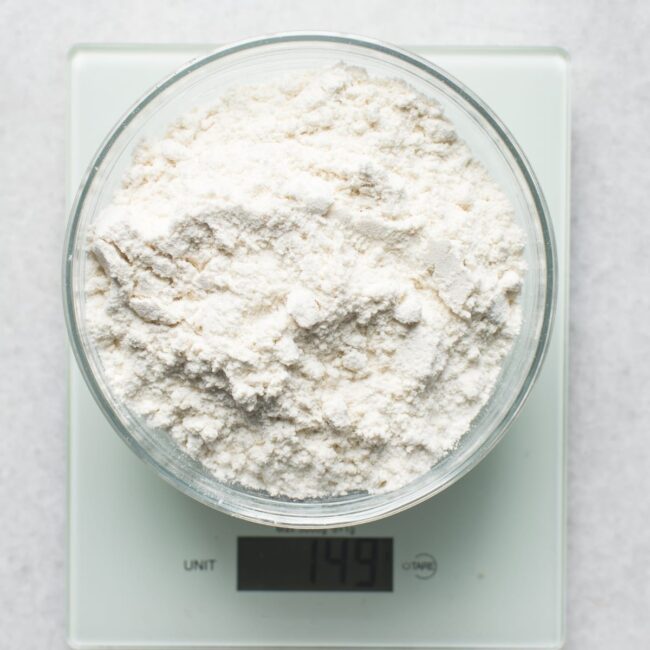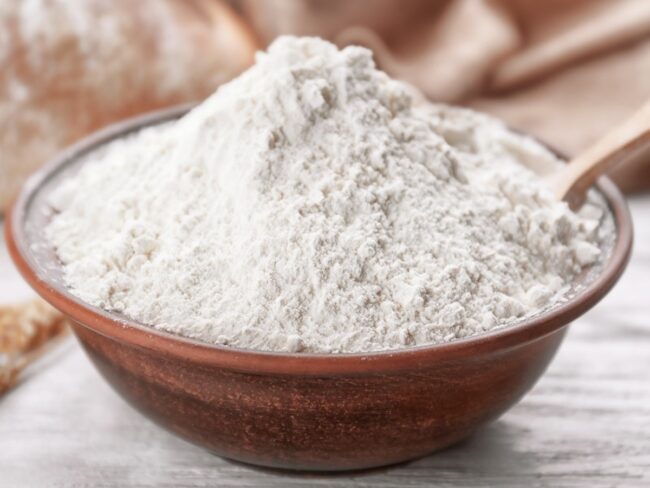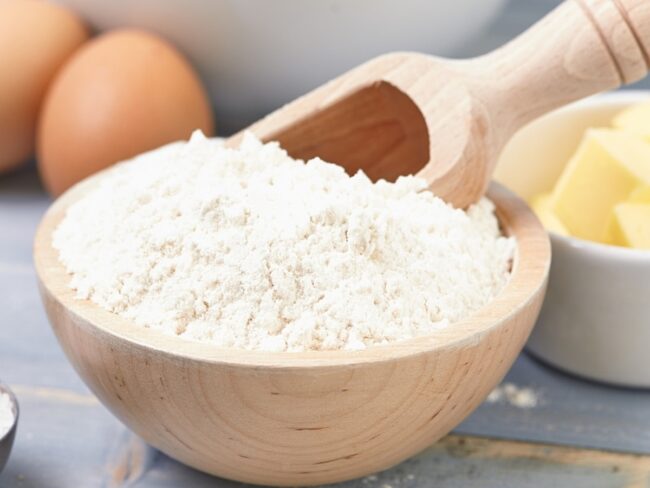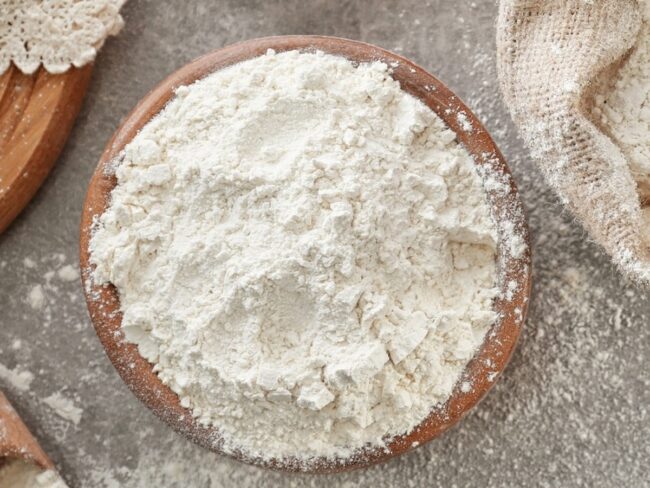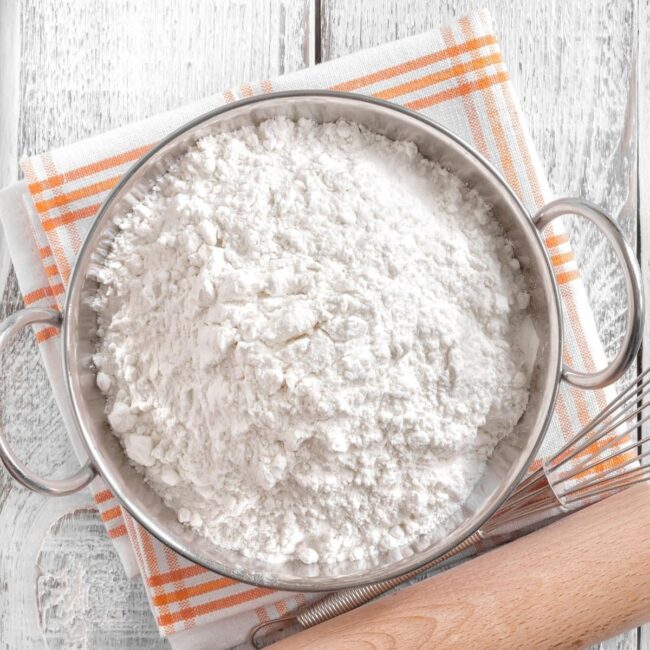7 Different Wheat Flours and Their Best Uses
Wheat flour types and their uses in cooking open a door to a versatile universe of textures and flavors.
A broad spectrum, from airy pastry flours to robust bread flours, defines the character of countless culinary traditions.
A solid understanding of these flours lays the foundation for endless culinary success.
Wheat Flour: The Basics
Wheat flour is a fundamental baking ingredient, providing structure and texture to baked goods. Its gluten content affects elasticity and density.
Wheat Flour Ingredients
Wheat flour is made from three essential components: bran, germ, and endosperm.
The bran provides a healthy dose of fiber and plays a crucial role in digestion.
Packed with vitamins and minerals, the germ is where most of the nutrients are found.
The endosperm serves as the main source of starch and gluten, giving baked goods their structure.
Whole wheat flour combines all these parts for a more nutritious option compared to white flour, which primarily contains just the starchy endosperm after removing both bran and germ.
Wheat Varieties Explained
Wheat comes in various types, each offering distinct characteristics for different culinary creations.
Hard red wheat excels in yeast breads due to its high gluten content, providing structure and rise.
For those seeking a milder flavor, hard white wheat serves well in whole wheat recipes without overpowering other ingredients.
Soft wheat shines brightly when baking cakes and pastries because of its lower gluten levels, resulting in tender textures that melt in your mouth.
Durum wheat stands out for pasta-making with its exceptional hardness and high protein content; it delivers an outstanding chewiness that pairs perfectly with rich sauces or light dressings.
Milling Steps
The milling process transforms wheat grains into flour, a staple in many kitchens.
After cleaning, the grains undergo conditioning to achieve the right moisture level.
Crushing occurs during milling, separating bran, germ, and endosperm with precision.
The final product is fine particles of endosperm known as flour; its type varies based on how it’s milled.
All-purpose flour strikes a balance between structure and tenderness in baked goods due to its refined nature.
Types of Wheat Flour to Learn
Wheat flour serves as a staple ingredient in kitchens around the world. Different types of wheat flour cater to various culinary needs, each with its unique properties and uses.
All-Purpose Flour
All-purpose flour serves as a fundamental ingredient in countless recipes.
Its blend of hard and soft wheat provides the right balance for various baking endeavors.
With a protein content between 9% and 12%, this flour supports both structure and tenderness in baked goods.
The moderate gluten level contributes to doughs that are easy to work with, ensuring delightful results whether you're crafting bread or cookies.
This essential kitchen staple adapts well, making it a go-to choice for both novice bakers and seasoned chefs alike.
Bread Flour
Bread flour stands out due to its high protein content, ranging from 12% to 14%.
This quality plays a crucial role in developing gluten, which contributes significantly to the bread's strength and texture.
Perfect for yeast-based recipes, it encourages a delightful rise while ensuring a hearty crumb.
Recipes that require bread flour often yield loaves with satisfying chewiness.
Using this specialized flour can elevate your baking experience by enhancing the overall quality of your homemade breads.
Whole Wheat Flour
Whole wheat flour offers a wholesome profile, incorporating every part of the wheat kernel.
Its robust flavor and hearty texture elevate baked goods, providing a satisfying bite that white flours can't match.
Health-conscious bakers often prefer it for bread and pastries due to its impressive fiber content and nutritional benefits.
Mixing it with all-purpose or bread flour can enhance the final product's consistency while retaining those nutritious elements.
Choosing whole wheat flour means embracing both taste and health in your culinary adventures.
Cake Flour
Cake flour stands out due to its low protein content, which ranges from 7% to 8%.
This fine-milled flour is derived from soft wheat and contributes to a tender texture in baked goods.
Bakers often choose cake flour for crafting airy sponges and delicate pastries.
Its unique properties ensure that cakes rise beautifully while maintaining a soft crumb.
For anyone passionate about baking, having cake flour on hand can elevate the quality of your creations significantly.
Pastry Flour
Pastry flour sits comfortably between cake and all-purpose flour, making it a versatile choice for various baked goods.
Its soft wheat composition ensures a tender texture while maintaining the ability to shape dough easily.
This balance results in delicate pastries that have just the right amount of flakiness without losing their structure.
Ideal for crafting tarts and cookies, pastry flour elevates your baking with its unique properties.
You’ll notice how effortlessly it transforms your creations into delightful treats that impress at any gathering.
Self-Rising Flour
Self-rising flour simplifies baking by combining essential ingredients into one mix.
This blend guarantees even distribution of leavening agents, which results in a reliable rise every time.
Recipes for biscuits and quick breads shine with this convenient option, saving time and effort in the kitchen.
Using self-rising flour allows you to focus more on flavor rather than measuring multiple components.
Consider trying it next time you whip up a batch of your favorite baked goods; the ease might surprise you!
Specialty Flours
Durum flour, known for its robust protein levels, creates pasta with a delightful chewiness that elevates any dish.
On the other hand, 00 flour is finely milled to produce a soft dough that's perfect for crafting authentic Neapolitan pizzas.
These flours are not just ingredients; they provide specific textures and flavors that can transform your culinary creations.
Choosing the right flour can make all the difference in achieving restaurant-quality meals at home.
How Different Flours Are Used in Cooking
Different flours, like whole wheat, all-purpose, and cake flour, have unique properties suited for specific recipes. Choosing the right type ensures proper texture.
Baking Using Wheat Flour
All-purpose flour serves as a go-to ingredient in countless kitchens.
Its flexibility allows for everything from cookies to sauces, accommodating various culinary needs.
Bread flour shines when it comes to yeast-based recipes, ensuring that bread rises beautifully and maintains a chewy texture.
The high protein content in bread flour creates the perfect structure for baked goods that require strength and chewiness.
With these two types of flour at your disposal, you can tackle an array of delicious dishes with confidence and ease.
Breads and Buns
Bread flour stands out as the top pick for crafting breads and rolls.
With a high protein content, it forms a robust gluten structure that contributes to a satisfying chewiness.
Whole wheat flour introduces a rich, nutty taste that enhances the overall flavor profile of baked goods.
Blending it with all-purpose flour lightens the texture while retaining those wholesome elements.
This combination results in delicious loaves that cater to both traditional and modern palates alike.
Cakes and Treats
Cake flour and pastry flour shine in the world of baking, offering a tender crumb that elevates your cakes and pastries.
With their low protein content, these flours create a delicate texture that melts in your mouth.
Self-rising flour simplifies the process by combining baking powder and salt, saving time for busy bakers.
Perfect for those who want to achieve lightness without extra steps, it ensures consistent results every time.
Experimenting with these flours opens up an array of delicious possibilities in the kitchen!
Cookies and Treats
All-purpose flour offers a dependable foundation for cookies and biscuits, ensuring they maintain their shape while remaining soft.
When a lighter texture is preferred, pastry flour shines through with its finer grain.
Choosing the right flour can greatly influence the final outcome of your baked goods.
Think about what you want from each batch; do you crave sturdiness or tenderness?
Experimenting with these flours can lead to delightful surprises in flavor and texture every time you bake.
Pasta and Noodles
Durum wheat stands out with its robust texture and impressive protein levels.
This grain is milled into semolina, a key ingredient that gives pasta its desired firmness.
The finely ground 00 flour, often used in Italian cuisine, elevates both pasta and pizza dough to new heights of authenticity.
You’ll notice the difference in every dish prepared with these ingredients.
A meal crafted from durum wheat and 00 flour carries the essence of tradition straight to your plate.
Sauce Thickening Ingredients
All-purpose flour serves a versatile role in the kitchen, especially when thickening sauces.
Its ability to blend seamlessly ensures that the sauce maintains its intended flavor while gaining the desired consistency.
Cake flour, with its lower protein content, provides an even finer texture for those special recipes requiring a delicate touch.
This alternative can enhance certain sauces without overpowering other ingredients.
Choosing between these flours allows for tailored results in your cooking adventures.

